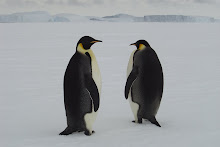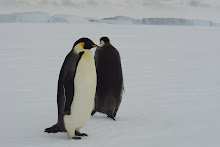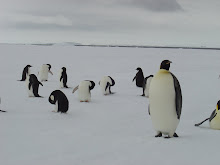Antarctica is known to be holding 75% of the total world’s fresh water in the form of 90% ice. To hold, this water in a healthy state of hygiene, it has a natural cooler, otherwise, water would have developed bacterial counts, much higher than probably, we can consume. Also, the loss of this water in the form of evaporation is compensated by the fresh snowfall, so that it maintains itself. The beauty of this fresh water is that, Antarctica is not holding this water in a deep well or pond or a pit or lake; it is on the top of gently increasing slopes of a huge dome. Probably nature has kept it in this fashion, so that man can use it, as and when required.
Antarctica is a gigantic freezer with its doors open to the southern hemisphere. Since its doors are open, it transports cold in the form of air out flowing from the interior of the continent to the periphery; water melted from polar cap ice and the shelf breaking in the form of ice bergs. The transport of cold is probably to keep the biological life in the Antarctic ocean as full of proteins , fat and fresh for consumption.
The biological reserve that has already been exploited by the man is the biological life in the ocean. Whales and seals were killed for various reasons and to such an extent that today, many nations had to declare them as "endangered species". Now, man has focused its attention on krill-the stock of food is very well known. The use of Antarctic bacteria for bio-sciences applications is another reserve.
Apart from these two apparent resources, it is the hidden resources which are now being looked at and as assessment is being made.
Antarctica is attaining great importance, as a possible source of minerals, oil, coal etc. However, at the moment, the exact resource potential and economics, may be the limiting factors, but with the technological advancements, days are not far off, when mining, off-shore oil drilling etc may be a reality in Antarctica.
Antarctica formed a part of the super Gondwana continent about 200 million years ago. Australia, India, Africa and South America were part of this Gondwana continent, which slowly drifted apart after Gondwana fragmented. Landmass of Antarctica, which covers an area of about 14.5 million sq kms, is about 3.2 to 3.6 billion years old, covered by rocks of relatively younger age of sedimentary, plutonic and of volcanic origin.
Therefore, since, India, Australia, South America and Africa have deposits of mineral wealth, it is therefore, believed that the Antarctic continent must have these deposits in large quantities, but here everything is underneath, the thick polar cap ice. In fact, it is the thick polar cap ice, which has restricted, the exact assessment and exploitation of minerals, but everyone is curious to know, what kind of deposits are there and what could be our share, if such an exploitation becomes, a reality.
Until 1970s, the expeditions were mainly for Scientific purposes, but with the ever increasing pressure of population, energy and economical needs of the countries, several nations have taken interest in Antarctica's mineral resources. Of course, the assessment of Antarctic mineral resources at the present stage is based on geological analogies and reconnaissance evidence.
The Antarctic Peninsula is easily accessible and thus has been studies, well. The modern technique of hydrocarbon resource assessment using sedimentary basin has suggested, petroleum potential of Antarctica. Oil is one of the minerals, which is going to attract many nations and the technology for off-shore oil drilling is not new to the world, and world, would see, its use even in Antarctica in the century. It has been estimated that 45,000 million barrels of oil and 115 trillion cubic feet of gas may lie, off shore the Antarctic coast.
Of course, while making any off-shore drilling, the natural gate keepers of Antarctica, technology will have to be developed to tame the natural gate keepers of Antarctica-the Ice-bergs.
Coal seems to be available in varying quantities and coal belts have been postulated under most of the east Antarctica's central ice sheet. It is believed that coal deposits many be around 11% of the total coal deposits of the whole world.
Among the other minerals, mica, quartz crystals, iron and many other ores are also available.
The exploitation of any particular mineral deposit in Antarctica will depend on its type, size and location, as well as, the environmental factors. At the moment, minerals of high value like gold, platinum, nickel, uranium will get the priority.
Although, mining at the moment is banned, United States environmental groups were the first to oppose the potential opening of mining and oil drilling in Antarctica, it has now been signed by all the member nations of the Antarctic treaty.
It is in fact the Antarctic treaty which has kept the continent free of conflicts, but the human pressure is increasing due to the scientific and tourist activities. The treaty bans mining in Antarctica for a minimum of 50 years and designates the whole continent and its dependent marine eco-system as a natural reserve devoted to peace and science.
QUOTE OF THE DAY!
"Before: Man search for food! Now: Food search for man!!"
"Life without energy is like a candle without fire."
Adsense
Showing posts with label Environment. Show all posts
Showing posts with label Environment. Show all posts
Friday, July 25, 2008
Tuesday, April 1, 2008
THE FATE OF LOKTAK LAKE
Manipur the ‘Jewel of India’ or the ‘Switzerland of the East’ has so many peculiar features. Endemic plants, animals and scenic beauties regardless of any exaggeration, will always be pristine. The state which lies between the 230 80’ N - 250 68’ N and 930 03’ E - 940 78’ E at the North East extreme of India, nestling at an altitude of about 790 m above the mean sea level was guarded naturally by nine ranges of hills.
Although, Manipur is a small state (area = 22,327 Sq. Kms), the species endemism are surprising large. The climate, topography, and geographical conditions are somewhat different from the rest of the world, determining the large number of biological diversity in this state. Adding more to its beauty like a sparkling diamond amongst the pearls, a beautiful lake known as “Loktak Lake” shines at the center of the state. Loktak (LOK = stream + TAK = the end) is the journey end of several streams and rivers. It is also a pulsating lake, which is about 500 Sq. Kms during rainy season and 250 Sq. kms during winter and is proud to be the largest fresh water lake in the northeastern region of India. The cultural and the traditional aspects of Manipuris will never be completed without relating this lake, which has been witnessing the whole history from the beginning of the Manipuri civilization. “Moirang Kangleirol” among the various examples is still remembered till today.
This lake is inevitable to the communities of Manipur. Loktak Lake is becoming very important in terms of its socio economic value, environment, cultural, tourism, habitats of numerous waterfowls, plants, animals, fishes, its dynamic ecological system, potential natural resources etc. were all becoming indispensable to the people of not only Manipur, but also to the world. The first international concern of this lake was in the year 1990 in which “the Convention on Wetlands of International Importance” drafted at the Iranian City of ‘Ramsar’ (1971) gives full emphasis of the Loktak Lake for its peculiar characteristics. This convention simply known as “Ramsar Convention” thereby brings the Loktak Lake into the international status for its uniqueness and put into the limelight for its conservation and management Out of the 18,37,149 (as per 1991 census) populations of Manipur about 12 Lakhs people are directly or indirectly benefited from this lake. Foods, agriculture, irrigation, pisci-culture, energy, aesthetic and recreational values are exploited by the people since time immemorial. Thus, the exploitation of the various renewable and nonrenewable resources decides the socio-economic condition of the state. During the 1979 Manipur famine, the fruits of Trapa bispinosa/Trapa natans (Heikak) and Euryale ferox (Thangjing) were the only sources of livelihood for thousands of people. Just two decades back, the biodiversity of Loktak Lake was very rich in its floristic and faunistic value. However, today, the most important fauna of this lake, the Brow-antelered deer or Cervus eldi eldi (Sangai) is at the verge of extinction. Efforts are made by the government, voluntary organizations, and individuals to conserve this priceless deer species from extinction. In 1977 the Indian Board of Wildlife gave ‘Keibul Lamjao’ the status of a national park. A recent survey of the Loktak Lake revealed many of the undesirable factors, which we have been avoiding till today, either knowingly or unknowingly. An attempt to make the decision-makers aware about the fate of this lake has been put forward in this brief report. The major issues are as follows:
1. Waste products brought by the rivers
Nearly 29 to 30 rivers and streams feed Loktak Lake. ‘Ungamel Channel’ (Ithai Barrage) is the only outlet for this lake. The perennial rivers and streams, which flow into Loktak Lake, bring sediments every day in their course to the lake. Continuous soil erosion in the hilly terrain due to deforestation further enhances the process. The sediments deposit at the mouth of the rivers contributes to shallowing of the lake bottom. As most of the rivers flows in the heart or center of the cities and towns, the urban sewage dumped into these rivers ultimately reached the lake, whereby contributed in deteoriating the delicate ecosystem of the lake. Highly toxic substances such as insecticides, pesticides, oils, polythene bags, other non-biodegradable waste and municipal wastes further create a disastrous situation to the lake environment. “Nambul” river the most polluted river in Manipur ends up in this lake after depositing whatever possible pollutant it bring in its course. “Thongjaorok” or Bishnupur River on the other hand brought its entire sediments load, cause due to mass deforestation in the upper part of the hilly region of this river.
2. Soil erosion at Thanga Island
Today the face of “Thanga Island” has become scared by both natural and anthropogenic actions. Among the natural causes are the wind, waves, rainfall, and weathering of the rocks. This phenomenon was greatly enhanced by the human intervention, to fulfill the needs in an unsustainable manner. Various activities such as road construction, housing, playgrounds, schools, clubs, theatres etc. are degrading the environment of this island at its utmost level. Circular road constructed around this hill island by cutting trees and the sides are making unaesthetic and erosional features. Control measures over this highly populated hill island is out of question and it will remain unrestored, witnessing its dwindling environment helplessly, till it submerge into the lake!
3. Floating huts or Phumshang
Although a traditional way of living and a unique feature of Loktak Lake created by the local fishermen, “floating huts” or “phumshang” has disrupted the environment of the lake. As the population of the fishermen increased the number of phumshang also increased manifold. Now the huts can be estimated upto 2000 in number. Various plastic ropes, heavy rocks, woods, bamboos, zinc plates, iron rods etc. were use to construct the huts. Numerous pesticides and insecticides are also used for catching fish or as insects repellent. The live of a phumshang can be estimated upto 20 years, after that it sinks into the lake causing all the possible environmental degradation it can result! The main concerns of phumshangs are the formation of vertical profiles of the lake water body. The phumshang, which was made by accumulating hydrophytic plants, rocks, woods, bamboo’s, plastic ropes etc. blocks the sunlight to enter into the water. The lower portion of the floating hut decomposed and sinks down on the lake bottom, which is termed as “benthal”. The decomposed materials of benthal released toxic gases like methane, H2S, etc. dissolving the oxygen and making the water septic and polluted for the aquatic plants and animals to survive. The layer above benthal, which is a dead water zone, is called as “hypolimnion”. Above hypolimnion, a thin layer termed as “epilimnion” is the only place for some game fish to survive. In this zone, very little penetration of sunlight allows aquatic plants to grow and local fish to survive. Today, the benthal of Loktak Lake has become increasingly thick, which not only pollute the lake water but also contributed largely in shallowing the lake.
4. Extinction/Loss of indigenous species
Introductions of new and alien species of animals or plants are sometime drastic to those introduced habitats. Some of the best examples are the introduction of rabbits in Australia and pigs in Mauritius. These two animals had caused all the possible destruction in these two island nations. In Australia all the vegetation’s and crops destroyed and the population of rabbits increased astronomically, so the Government declared it as pest. Whereas, during the 17th century in Mauritius the Dutch introduced pigs’ breaks down all the eggs of the flightless bird called “Dodo”, now dodo is extinct (since 1692) and can never be seen in this world. Similarly, during the 80s the Government of Manipur had introduced many species of fishes, amphibians, insects and plants into the Loktak Lake without any concerns about the future consequences of the introduction of new and alien species. Among these are the grass craps, silver craps; insects like Weevil species (Neochetina eichhornia and Neochetina bruchi) etc. These have causes many perturbations to this lake ecosystem. Bottom-feeding rough fish stir up sediment, which released phosphorus. Indigenous species of fishes, plants and animals are rarely seen now. Earlier, during the 60s and 70s the lake was decorated with Nelumbo nucifera (lotus), Nymphaea stellata (lily), Alisma plantago (Kakthrum), Sagittaria sagittifolia (Koukha), Setaria pallidefusea (Kambong), Oenanthe javanica (Komprec), Alpinia galanga (Pullei) etc. but today where has it all gone? Once Loktak Lake was a playground for the local fishes like Channa punctatus (Ngamu), Anabus testudinius (Ukabi), Anguilla (Ngaril) and other locally known fishes such as Pangba, Tharak, Ngashap, etc. These fishes have now cursed the human being and surrendered to its rivals (introduced fishes) and slowly leaving its own home! Why it happens to our beloved Loktak Lake? The answer is we forgot to conserve our precious lake in a sustainable ways. The competitions amongst the introduced fishes and the local fishes, clearance of the breeding sites of the local habitats, water pollution, blockage at the Ithai Barrage dam for the periodic spawning fish to swim upstream, eutrophication and the menace of Eichhornia crassipes (Kabokang), stratification of the lake, over fishing etc. are the major culprits. Recent out break of the fish’s disease ‘Holo-ulceritis’ or UDC (ulcerative disease symptoms) was all due to highly polluted water body. The victims of this disease were mainly the indigenous fishes. The famous endangered Cervus eldi eldi (Sangai) is now at the mercy of the ruthless human being and the fate of extinction is knocking at the heaven’s door! Strategies to preserve Sangai were framed, rules and regulations are made, various do’s and don’ts were put into force. But the sad part is that the population of Sangai is always at the danger mark. This is because the authorities do not realize the actual meaning of ecosystem preservation. It is that the small plants, animals, birds and the microorganisms, which are more vulnerable to human perturbations. They interact with their nonliving environment to make sustain and survive this valuable Sangai and what else, we human being too! Therefore, the conservation of the minute plants and animals, also the physical and chemical environments are more or less important like we do for our Sangai. Today, we are witnessing the failures of the conservation strategies of the government, which is likely to be continued in the near future also. The victims will not be our Sangai but it is our coming generations that will live grievously by the betrayal of their ancestors.
5. Water pollution
Detergents, soaps and other phosphates and nitrates containing chemicals, which brought down by the rivers to this lake cause ‘eutrophication’ of the lake. In this process algal blooms started and compete with other aquatic plants for light and nutrients. These blooms release toxic chemicals killing aquatic plants, animals, and birds and deplete oxygen; thus water begins to stink. As the water body is lentic, the decomposed organic matters remain in the lake for a very long time. Use of chemical weedicides, rapid accumulation of weeds near the lake shores, use of pesticides and insecticides, chemical fertilizers, and other non-biodegradable substances are all the factors for causing the lake water polluted.
6. Shallowing of the lake
As mentioned in Section 1, nearly 29 to 30 rivers and streams feed the Loktak Lake. The incoming rivers and streams brought sediments and dump it into this lake. The outlet (Ungamel Channel) removes only the excess water and practically no sediments. The depression is fill up with sediments and in course of time converts into terrestrial landform. The process is known as ‘Hydroseric Succession’. Therefore, the life of all the lakes is not permanent. The Loktak Development Authority (LDA) decisions of dredging the lake bottom are too fast. The officials should understand the ecological perturbations and the future consequences. They should adopt a comprehensive Environmental Impact Assessment (EIA) report. The decision of the EIA should involve the local people and transparent. Foreign consultant will do no good for this lake because a thorough on site survey of the lake is needed for any conclusive decision. Otherwise, the failure of the project is inevitable!
7. Impacts on Migratory birds
Migratory birds are the indicators of climatic change. They flew from one place to another where there are abundant food supplies and suitable climatic conditions with nestling sites. Earlier flocks of migratory birds annually arrived in this lake from far-flung place like ‘Siberia’ and other parts of the world. Siberian cranes, wild ducks, herons, pink-headed ducks etc. are some of the birds, which annually visited Loktak Lake. Just a decade back the sky was alive with flocks of birds and the quacking were heard everywhere in Manipur. Today’s generation has miss something very unique and they are not going to hear or see either the native birds or the migratory one. Pink-headed ducks were reported to be extinct from the lake by the British’s due to extensive shooting. The native brown crow (Kwak), which was once a sacred bird, is no longer heard cawing. The possible causes are climatic change, extensive shooting or killing, over population of human, deforestation, habitat destruction, use of pesticides and insecticides in agricultural practice etc.
8. High water level
As the lake become shallower the level of the water also rises. Thousands of hectares of cultivable lands and grazing fields are submerse into the water. People migrated from their original land and become poor and helpless. Thousands of tons of producible rice are now lost. Poverty, unemployment and lack of proteins are making the people disturbed. On the other hand the once cultivated field, which are now submerge are producing weeds! The Loktak Hydro Electric Power Corporation is enjoying the high water level. But, it is not the high level of water, which the project should concern; it is the volume of water, which the project should focus. The more the volume of water, the more will be the energy production. It can only be satisfied if the lake is deep. To make it deep, a comprehensive environmental study is seriously needed by giving full emphasis on ecosystem conservation and sustainable development.
9. Water scarcity and energy crisis
The NHPC promised 105 megawatts of electricity has become a lip service within a short span of time. Energy theft and non-payment of taxes, which was levied for the electricity consumers and importantly the most concerned water volume, makes them helpless. During winter when the lake water reduced drastically, further generation of energy usually stop. To cope up this problem the Loktak Development Authority (LDA) was set up. It is difficult to predict the future of LDA presently, but easy to tell the fate of Loktak Lake, which LDA has been continuously destructing the pristine ecosystem. In the process of dredging, a large number of flora and fauna are perturbed. It is still unclear whether the LDA is going to dredge the buffer zone of the Keibul Lamjao National Park where the endangered deer species Sangai thrive.
10. Impacts on socio-economy of the state
Loktak Lake is the common resource of the people of Manipur. Large amount of incomes can be generated, if it is manage and utilize in a proper and sustainable ways. Resources such as fisheries, agriculture, irrigation, biological resources, tourism, hydropower projects, etc. are readily utilizable from this lake. Presently, it is found that resource utilization is minimal whereas resource depletion is very high. Thus it brings about the concept of the “tragedy of common”. The tragedy of common or the major economic crisis are brought about by the submerged cultivable lands, submerged grazing fields of cattle’s, poor harvesting of fishes, failure of the power supplies due to lesser water volume, unemployment etc. One best example of the economic crisis is the submerged grazing grounds, which leads to reduction in the cattle’s population. To cope up the problems new management strategies should be taken up by monitoring and evaluating the various potential impacts and drew attentions to the public for participation in restoring this lake.
11. Human impact on the ecosystem
Man is responsible for all the disastrous situation of Loktak Lake. Using of hazardous substances such as, DDT, PCB’s (Polychlorinated biphenyl), greases, phenols, plastics, plasticizers, metallic wastes, suspended solids, toxins, acids, salts, dyes, agricultural fertilizers, pesticides, insecticides, oil and petroleum products, and other municipal wastes brought by the rivers, makes the lake a huge dead water body. With these substances contaminating the lake, various plants, animals, microorganisms, molluscs, fishes, birds, amphibians, reptiles, and even human were severely affected. Instances of food poisoning and disease symptoms were frequently reported after consuming the contaminated fishes and other foods. Oil spilled over the lake surface reflected the incoming sunlight and degraded the ecosystem and the water become unwanted for further use. Plants, animals, birds, were the victims of this pollutant. Another concern is the poor sanitation of the local people, which largely contributed in spreading diseases, and degradation of the environment. The once beautiful lake, which was full of birds, flowers, beautiful insects, butterflies, buffaloes, wild boars, deer’s, fishermen, and other natural gifts will not be witness by the coming generation
12. Conclusion
Is not it our concern today for the coming generations to live in harmony with the local environment? We have tortured too much of our precious Loktak Lake. It’s now time for us to give some attention towards its dwindling environment and stop the manipulation created by laymen. Before its too late, we should join hand and come up with some solution. The various negative factors given above can be made slower if we adopt certain lake restoration techniques such as: treatment ponds and wetland, watershed management, fish harvesting, aquatic plant control, aeration system, alum treatment, modeling of lake phosphorus budget, vacuum sweeping, waste water discharge control, hypolimnetic aeration, erosion control, rough fish removal, dredging, draw down, dilution, flushing etc. The government, university, colleges, local people, voluntary organizations and individuals are appealed to wake up and carry out some new and innovative program for conserving this lake ecosystem at the earliest. Last but not the least; politics should not be constrains for this developmental scenario.
Article:
Article:
Labels:
Brow-antelered deer,
Environment,
extinction,
Loktak Lake,
Manipur,
Watershed
Subscribe to:
Comments (Atom)
Mole Holes!

Weathering of rocks in Antarctica
Rock Weathering
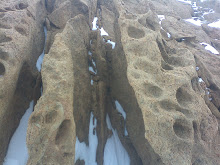
Larsemann Hills Rock Weathering
Hanging Rock
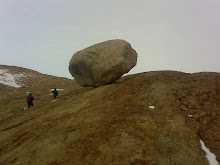
Hanging Rock Larsemann Hills and my friend behind it
Chooper
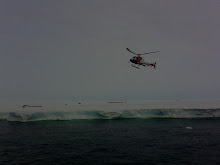
Chopper on duty
Algae
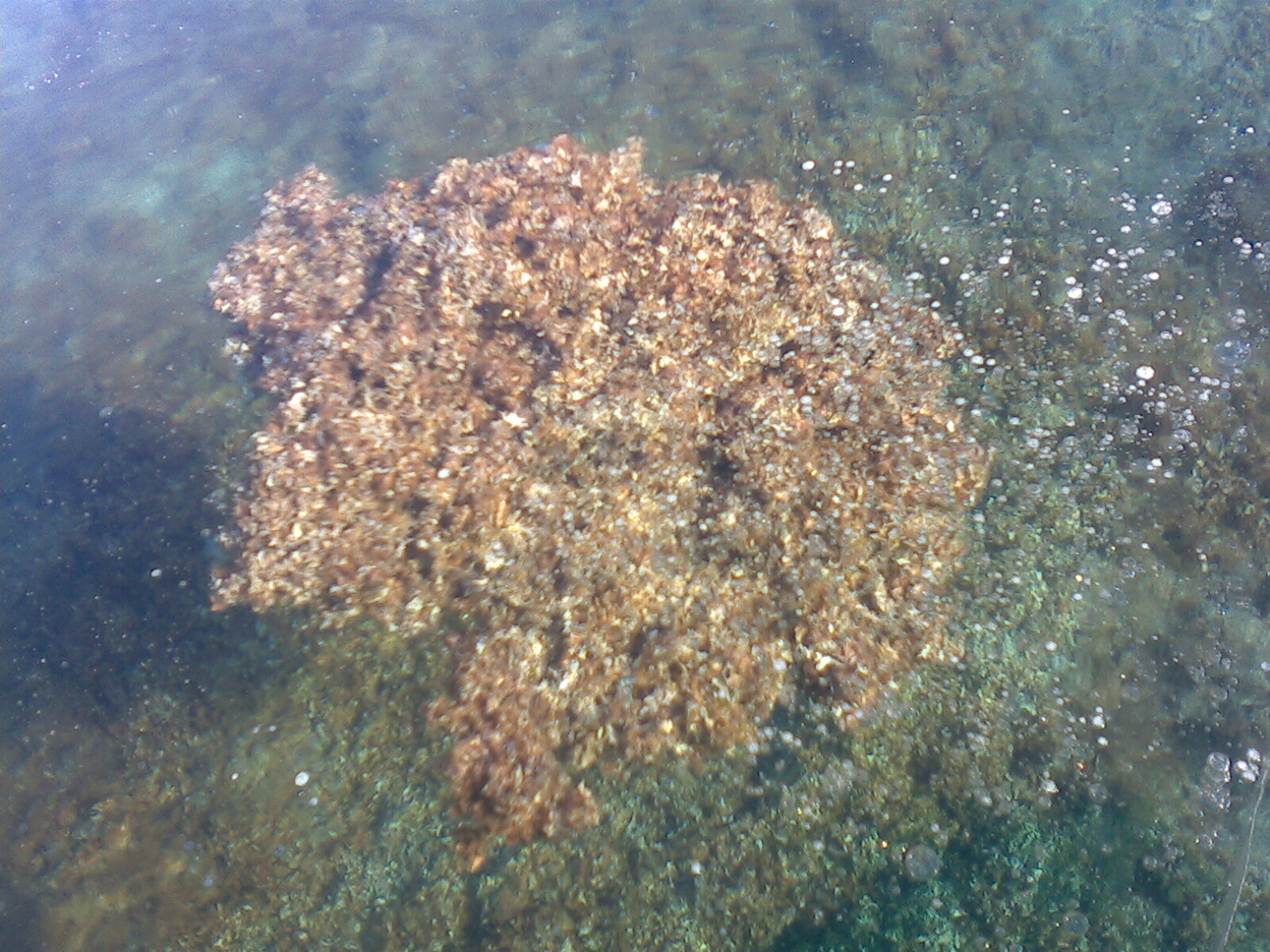
Antarctic Algal Mat
Pancake Ice
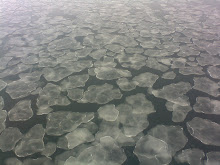
Antarctic Pancake Ice
